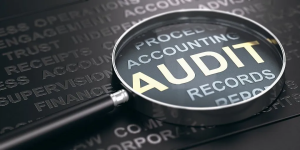Blockchain technology has revolutionized the way transactions are conducted and recorded. Its decentralized and transparent nature has made it an attractive option for various industries, including finance, supply chain, and healthcare. However, with the growing adoption of blockchain, the need for auditing and monitoring blockchain transactions has become crucial. In this article, we will explore the importance of auditing and monitoring blockchain transactions, the tools and techniques available, and the challenges associated with this process.
Introduction
Blockchain technology is a distributed ledger system that records transactions across multiple computers or nodes. It provides a secure and tamper-proof way of storing and verifying data. Each transaction on the blockchain is recorded in a block and linked to the previous block, forming a chain of blocks. This decentralized nature eliminates the need for intermediaries and ensures transparency.
Auditing and monitoring blockchain transactions involve verifying the accuracy and integrity of the recorded transactions. It helps in ensuring transparency, identifying fraudulent activities, and complying with regulations and legal requirements. Let’s explore the need for auditing and monitoring in more detail.
The Need for Auditing and Monitoring Blockchain Transactions

Ensuring transparency and accountability
Blockchain transactions are visible to all participants in the network, providing a high level of transparency. Auditing these transactions allows organizations to ensure accountability and verify the accuracy of recorded data. It helps in maintaining trust among stakeholders and building a reliable ecosystem.
Identifying fraudulent activities
Although blockchain technology is secure, it is not immune to fraudulent activities. Auditing and monitoring transactions can help in identifying and preventing fraud. By analyzing transaction patterns and behaviors, suspicious activities can be detected early on, preventing potential financial losses.
Compliance with regulations and legal requirements
Many industries, such as finance and healthcare, have specific regulations and legal requirements that need to be followed. Auditing and monitoring blockchain transactions ensure compliance with these regulations, such as Anti-Money Laundering (AML) and Know Your Customer (KYC) regulations. It provides a transparent audit trail that can be used for regulatory reporting and investigations.
Auditing Blockchain Transactions
Auditing blockchain transactions involves verifying the accuracy and integrity of the recorded transactions. It requires understanding the audit trail in blockchain, analyzing smart contracts, and ensuring the proper validation of transactions.
The audit trail in blockchain refers to the chronological sequence of transactions that have occurred on the network. Each transaction is linked to the previous one, forming a chain of blocks. Auditors can trace the origin of a transaction and verify its legitimacy by examining the blockchain’s history.
Verifying transactions on the blockchain requires ensuring that the recorded data is accurate and matches the intended transaction. This can be done by examining the digital signatures and cryptographic hashes associated with each transaction. Any discrepancies or irregularities can be flagged for further investigation.
Smart contracts, which are self-executing contracts with predefined rules and conditions, play a crucial role in many blockchain applications. Auditors need to understand the logic and implications of smart contracts to ensure their compliance and accuracy. Smart contract audits help in identifying vulnerabilities and potential risks that could be exploited by malicious actors.
Monitoring Blockchain Transactions
In addition to auditing, monitoring blockchain transactions in real-time provides proactive insights into the network’s activities. It involves tracking and tracing transactions, identifying suspicious patterns, and detecting anomalies.
Real-time transaction monitoring allows organizations to have a constant view of the blockchain network. It provides visibility into the flow of transactions and ensures timely detection of any abnormalities. By setting up alerts and notifications, organizations can respond quickly to potential threats or suspicious activities.
Tracking and tracing transactions on the blockchain involve following the path of a transaction from its source to its destination. This helps in understanding the flow of funds or assets and identifying any unauthorized or suspicious transfers. It also enables organizations to track the provenance of goods in supply chain applications.
Identifying suspicious patterns and behaviors is crucial in monitoring blockchain transactions. By analyzing transaction data and applying statistical models, organizations can detect anomalies or deviations from normal behavior. These anomalies could indicate potential fraud or security breaches that require further investigation.
Tools and Techniques for Auditing and Monitoring
Auditing and monitoring blockchain transactions can be facilitated by various tools and techniques. Let’s explore some of the commonly used ones:
- Blockchain explorers and analytics platforms
Blockchain explorers are web-based tools that allow users to browse and search transactions on the blockchain. They provide a user-friendly interface to explore the blockchain’s history, view transaction details, and track addresses. Analytics platforms built on top of blockchain explorers offer advanced features such as data visualization, trend analysis, and anomaly detection.
- Data analysis and visualization tools
Analyzing large volumes of blockchain data requires powerful data analysis and visualization tools. These tools help in uncovering patterns, identifying correlations, and presenting the data in a meaningful way. By visualizing transaction flows and network connections, auditors can gain valuable insights into the blockchain ecosystem.
- Machine learning and AI for anomaly detection
Machine learning and artificial intelligence techniques can be employed to detect anomalies in blockchain transactions. By training models on historical transaction data, these techniques can identify patterns that deviate from normal behavior. They can help in flagging suspicious activities and reducing false positives in transaction monitoring.
Challenges in Auditing and Monitoring Blockchain Transactions
Auditing and monitoring blockchain transactions come with their own set of challenges. Let’s discuss some of the key challenges:
- Privacy and confidentiality concerns
While blockchain provides transparency, it also raises concerns regarding privacy and confidentiality. Auditors need to balance the need for transparency with the protection of sensitive information. Techniques such as zero-knowledge proofs and privacy-preserving algorithms are being explored to address these challenges.
- Scalability and performance limitations
As blockchain networks grow in size and complexity, scalability and performance become significant challenges. Auditing and monitoring transactions on a large-scale blockchain can be resource-intensive and time-consuming. Solutions such as off-chain data storage and sharding are being developed to improve scalability.
- Regulatory and legal complexities
Different jurisdictions have varying regulations and legal frameworks concerning blockchain technology. Auditors need to navigate through these complexities to ensure compliance. It requires staying up-to-date with the latest regulations and collaborating with legal experts to ensure a comprehensive audit and monitoring process.
Best Practices for Auditing and Monitoring
To effectively audit and monitor blockchain transactions, organizations should follow these best practices:
Establishing clear audit and monitoring policies
Having well-defined policies and procedures for auditing and monitoring blockchain transactions is essential. It ensures consistency and standardization in the audit process. Clear guidelines should be established for auditors, covering aspects such as data collection, analysis techniques, and reporting.
Regularly updating security measures
Blockchain technology is constantly evolving, and so are the security risks associated with it. It is crucial to regularly update security measures to stay ahead of potential threats. This includes implementing robust access controls, encryption mechanisms, and multi-factor authentication.
Collaborating with blockchain experts and auditors
Blockchain is a complex technology, and auditors may require specialized knowledge and expertise to effectively audit and monitor transactions. Collaborating with blockchain experts and auditors ensures a comprehensive and accurate audit process. It allows organizations to leverage the knowledge and experience of professionals in the field.
The Future of Auditing and Monitoring Blockchain Transactions
The future of auditing and monitoring blockchain transactions looks promising. As technology advances, we can expect the following developments:
Advancements in technology and automation
Advancements in technology, such as machine learning and AI, will enable more efficient and automated auditing and monitoring processes. These technologies can analyze vast amounts of data in real-time, detect anomalies, and generate actionable insights. Automation will streamline the audit process and reduce manual efforts.
Integration with existing auditing frameworks
Blockchain auditing and monitoring will become an integral part of existing auditing frameworks. As blockchain technology becomes more mainstream, auditors will incorporate blockchain-specific procedures into their overall audit approach. This integration will ensure a holistic and comprehensive audit of organizations utilizing blockchain technology.
Increased adoption and standardization
With the increasing adoption of blockchain technology across industries, the need for auditing and monitoring will grow exponentially. This will drive the development of industry standards and best practices for auditing blockchain transactions. Standardization will enhance transparency, interoperability, and trust among stakeholders.
Conclusion
Auditing and monitoring blockchain transactions play a crucial role in ensuring transparency, accountability, and compliance. With the rise of blockchain technology, organizations need to establish robust audit and monitoring processes to mitigate risks and safeguard their operations. By leveraging tools, techniques, and best practices, auditors can effectively verify transactions, detect anomalies, and maintain trust in the blockchain ecosystem. By verifying the accuracy and integrity of recorded transactions, organizations can build trust among stakeholders and detect fraudulent activities. The use of tools such as blockchain explorers, data analysis, and machine learning techniques enhance the effectiveness of these processes. However, challenges such as privacy concerns, scalability limitations, and regulatory complexities need to be addressed to fully harness the potential of auditing and monitoring. Looking ahead, advancements in technology, integration with existing auditing frameworks, and increased adoption and standardization will shape the future of auditing and monitoring blockchain transactions.






